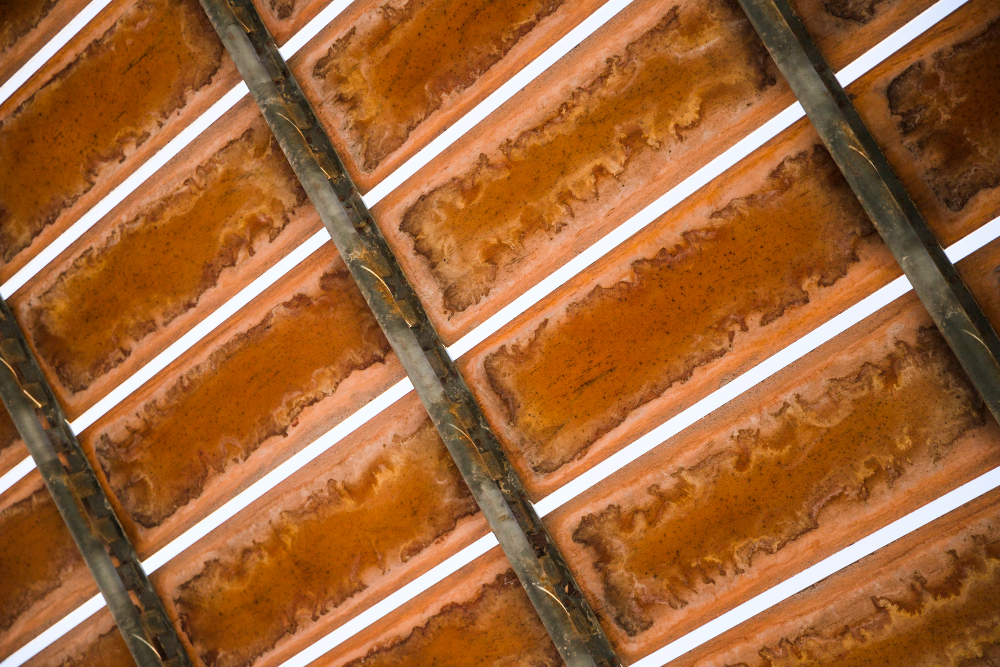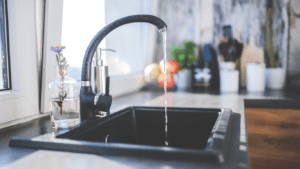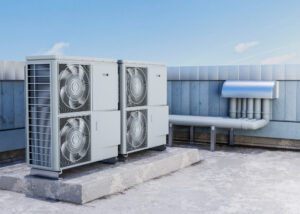Water Damaged Home is a common but devastating issue that can affect any home. Whether it’s caused by a burst pipe, a leaky roof, or a natural disaster, the effects can be long-lasting and costly. This comprehensive guide will help you understand the causes, signs, and steps to take when dealing with water damage. We’ll also cover preventative measures to protect your home from future water-related issues.
1. Understanding Water Damage
Types of Water Damage
Water damage can vary in severity and source, and it’s important to recognize the different types to address them effectively.
- Clean Water Damage: This type is caused by water from a clean source, like a broken pipe or a leaking faucet. It’s the easiest to handle but still requires prompt action to prevent further damage.
- Grey Water Damage: This type involves water that is slightly contaminated, such as water from washing machines, dishwashers, or toilets (without feces). It can cause health issues and requires more thorough cleaning.
- Black Water Damage: This is the most severe type, involving highly contaminated water from sources like sewage, floodwater, or standing water. It poses significant health risks and requires professional remediation.
Common Causes of Water Damage
Understanding the common causes of water damage can help you prevent future incidents. The most frequent culprits include:
- Burst or Leaking Pipes: Often due to freezing temperatures, aging, or corrosion.
- Roof Leaks: Caused by damaged shingles, poor installation, or storms.
- Appliance Malfunctions: Washing machines, dishwashers, and water heaters can leak or overflow.
- Natural Disasters: Flooding from heavy rains, hurricanes, or other severe weather events.
- Sewer Backups: Blockages in the sewer system can cause contaminated water to back up into your home.
2. Signs of Water Damage
Visible Signs
Spotting water damage early can save you from extensive repairs. Look out for these visible signs:
- Water Stains: Discolored patches on walls, ceilings, or floors.
- Peeling Paint or Wallpaper: Moisture can cause paint to bubble and peel.
- Warped or Buckled Floors: Water can cause wood or laminate flooring to warp.
- Mold Growth: Often appears as dark spots on walls, floors, or ceilings.
- Musty Odor: A persistent damp smell can indicate hidden water damage.
Hidden Signs
Sometimes, water damage isn’t immediately obvious. Keep an eye out for these subtle indicators:
- Unexplained Increase in Water Bills: A hidden leak could be the cause.
- Soft or Spongy Walls: Waterlogged drywall may feel soft to the touch.
- Dripping or Gurgling Sounds: These sounds behind walls or ceilings could indicate a leak.
- Cold Spots: Damp areas may feel colder than the rest of the room.
3. Immediate Steps to Take After Water Damage
Safety First
Before doing anything, ensure that your home is safe. Water and electricity are a dangerous combination, so if the water level is high or if electrical outlets are submerged, turn off the power to your home from the main breaker box.
Stopping the Source
Identify and stop the source of water if possible. For example, shut off the main water supply if a pipe has burst. If the water is coming from outside due to flooding, try to block the entry point.
Documenting the Damage
Take photos and videos of the damage as soon as possible. This documentation will be crucial for insurance claims and may also help professionals assess the extent of the damage.
Contacting Your Insurance Company
Notify your insurance company immediately after documenting the damage. They will guide you on the next steps, including whether you need to wait for an adjuster before starting cleanup.
4. Water Damage Restoration Process
Water Extraction
The first step in restoration is removing all standing water. This may involve using pumps for large amounts of water or wet vacuums for smaller amounts.
Drying and Dehumidification
After removing the water, it’s essential to thoroughly dry the area. Industrial fans, dehumidifiers, and heaters can speed up the drying process and prevent mold growth.
Cleaning and Sanitizing
All affected areas should be cleaned and sanitized to prevent bacteria and mold. This may involve disinfecting walls, floors, and furniture, and possibly discarding items that cannot be saved.
Repair and Restoration
The final step is repairing any damage caused by the water. This may include replacing drywall, flooring, and insulation, as well as repainting and restoring the home to its original condition.
5. Dealing with Specific Types of Water Damage
Flooding
Flooding can cause extensive damage in a short amount of time. It’s essential to act quickly to remove water and dry out the home to prevent long-term issues like mold and structural damage.
Leaking Roofs
A leaking roof can cause significant damage if not addressed promptly. Identify the leak’s source and repair it as soon as possible. In some cases, temporary patches can be used until a professional can make permanent repairs.
Burst Pipes
Pipes can burst due to freezing, corrosion, or excessive water pressure. If a pipe bursts, turn off the main water supply immediately and begin the cleanup process. Insulating pipes can help prevent future bursts.
Sewer Backups
Sewer backups are particularly hazardous due to the presence of harmful bacteria. It’s essential to call a professional for cleanup and repairs. Avoid using water in your home until the problem is resolved.
6. Health Risks Associated with Water Damage
Mold Growth
Mold thrives in damp environments and can begin growing within 24-48 hours after water damage occurs. It can cause respiratory issues, allergic reactions, and other health problems.
Bacterial Contamination
Water from floods, sewage backups, or standing water can be contaminated with bacteria that pose serious health risks. It’s crucial to sanitize all affected areas and dispose of contaminated items.
Structural Damage
Prolonged exposure to water can weaken your home’s structure, leading to issues like wood rot, foundation damage, and compromised structural integrity. Address water damage quickly to prevent long-term problems.
7. Preventing Future Water Damage
Regular Maintenance Tips
- Inspect Roof and Gutters: Regularly check your roof for damaged shingles and clean gutters to prevent water from pooling.
- Check for Leaks: Periodically inspect pipes, appliances, and faucets for leaks.
- Monitor Water Pressure: High water pressure can cause pipes to burst; use a pressure regulator to maintain safe levels.
Waterproofing Your Home
Consider waterproofing your basement or crawl space to protect against water intrusion. This may involve sealing cracks, installing a sump pump, or applying waterproof coatings to walls.
Installing a Sump Pump
A sump pump is a valuable tool for preventing basement flooding. It automatically removes water that accumulates in a sump basin, keeping your basement dry.
Monitoring Your Water Usage
Install a water monitoring system that alerts you to unusual water usage, which could indicate a leak. These systems can prevent minor issues from becoming major problems.
8. When to Call a Professional
Assessing the Severity
Minor water damage can often be handled by homeowners, but severe cases require professional intervention. Consider calling a professional if:
- The water damage covers a large area.
- The damage is due to black water (sewage or floodwater).
- Mold growth is extensive.
- Structural damage is suspected.
Understanding Professional Services
Water damage restoration professionals offer a range of services, including water extraction, drying, dehumidification, cleaning, and repairs. They have the equipment and expertise to handle severe damage safely and effectively.
Choosing the Right Restoration Company
When selecting a restoration company, consider the following:
- Experience and Certification: Look for companies with certified technicians and a solid track record.
- Response Time: Water damage requires immediate attention, so choose a company that can respond quickly.
- Customer Reviews: Check online reviews and ask for references to ensure you’re hiring a reputable company.
9. Insurance and Water Damage
Understanding Your Policy
Review your homeowner’s insurance policy to understand what types of water damage are covered. Most policies cover sudden and accidental damage, such as burst pipes, but may not cover flooding or gradual leaks.
Filing a Claim
When filing a claim, provide detailed documentation, including photos, videos, and receipts for repairs. Your insurance adjuster will assess the
damage and guide you through the claim process. Be sure to follow up regularly to ensure your claim is processed efficiently.
What to Expect from the Insurance Process
The insurance process can take some time, depending on the severity of the damage and the specifics of your policy. Here’s what you can generally expect:
- Initial Contact: After reporting the damage, an adjuster will likely visit your home to assess the situation.
- Damage Assessment: The adjuster will evaluate the extent of the damage and estimate the cost of repairs.
- Claim Approval: If the damage is covered, the insurance company will approve your claim and provide a settlement amount.
- Repair Process: Once the claim is approved, you can begin repairs. In some cases, the insurance company may pay contractors directly.
Conclusion
Water damage is a serious issue that can have lasting effects on your home and health. Whether it’s caused by a natural disaster, a burst pipe, or a leaking roof, acting quickly can make a significant difference in minimizing damage and reducing repair costs. Understanding the types of water damage, recognizing the signs, and knowing the steps to take can help you protect your home and ensure a smooth recovery process.
Preventative measures, such as regular maintenance, waterproofing, and installing a sump pump, are essential in safeguarding your home against future water damage. Additionally, understanding your insurance policy and knowing when to call a professional can save you time, money, and stress.
FAQs: Water Damaged Home
1. What should I do immediately after discovering water damage in my home?
First, ensure your safety by turning off the power if water is near electrical outlets. Then, stop the source of the water if possible, such as shutting off the main water supply. Document the damage with photos and videos for insurance purposes. Finally, contact your insurance company to report the damage and begin the claims process.
2. How can I tell if my home has hidden water damage?
Hidden water damage may manifest as soft or spongy walls, a musty odor, unexplained increases in water bills, or cold spots on walls and floors. If you suspect hidden damage, it’s best to have a professional inspection to identify and address any issues.
3. How long does it take to repair water damage?
The repair timeline depends on the extent of the damage and the type of water involved. Minor issues might be resolved within a few days, while extensive damage from flooding or sewer backups can take several weeks to fully repair and restore.
4. Can I handle water damage repairs myself, or should I hire a professional?
Minor water damage, such as small leaks or stains, can often be addressed by homeowners. However, for significant damage, especially involving black water (sewage) or extensive structural issues, it’s advisable to hire a professional restoration company to ensure thorough and safe repairs.
5. What are the health risks associated with water damage?
Water damage can lead to mold growth, which poses respiratory risks and allergic reactions. Additionally, contaminated water from sewer backups or floods can harbor bacteria and other pathogens, leading to potential health issues. Addressing water damage promptly and thoroughly is crucial to mitigating these risks.
6. How can I prevent water damage in my home?
Regular maintenance is key to preventing water damage. This includes inspecting your roof and gutters, checking for leaks in pipes and appliances, maintaining proper water pressure, and waterproofing vulnerable areas like basements. Installing a sump pump and monitoring your water usage can also help prevent damage.
7. What should I look for when choosing a water damage restoration company?
When selecting a restoration company, look for certified and experienced professionals. Check customer reviews, ensure they have a quick response time, and verify their ability to handle the specific type of water damage you’re facing. A reputable company will offer a detailed plan and transparent pricing.
8. Does homeowner’s insurance cover water damage?
Coverage depends on your policy. Most homeowner’s insurance policies cover sudden and accidental water damage, such as from burst pipes or a leaking roof. However, coverage may not extend to damage from floods or gradual leaks. Review your policy details and consult with your insurance agent to understand your coverage.
9. How can I detect and deal with mold after water damage?
Mold can begin growing within 24-48 hours of water damage. Look for visible mold, musty odors, or health symptoms like respiratory issues. For small areas, you can clean mold with appropriate cleaning agents and ensure thorough drying. For larger infestations, it’s best to hire a professional mold remediation service.
10. What are the most common causes of water damage in homes?
Common causes include burst or leaking pipes, roof leaks, malfunctioning appliances (like dishwashers or water heaters), natural disasters (such as floods), and sewer backups. Regular maintenance and inspections can help prevent many of these issues.
11. How can I document water damage for an insurance claim?
Take clear, detailed photos and videos of all affected areas, including structural damage, damaged belongings, and standing water. Keep records of any immediate actions taken, such as repairs or clean-up efforts. This documentation will support your insurance claim and help ensure you receive appropriate compensation.
12. When should I call a professional for water damage?
Call a professional if the water damage is extensive, involves black water, or if there are signs of significant structural damage or mold growth. Professionals have the equipment and expertise to handle severe cases and ensure a thorough restoration process.




